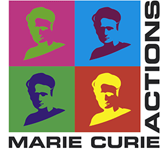Bridging the gap of neuronal communication by means of intelligent hybrid systems
Re.B.Us was inspired by...
-
Bush K, et al. (2012). Evidence-based modeling of network discharge dynamics during periodic pacing to control epileptiform activity. J Neurosci Methods 204:318-325. doi
-
Chao ZC, et al. (2005). Effects of random external background stimulation on network synaptic stability after tetanization: a modeling study. Neuroinformatics 3:263-280. doi
-
Chao ZC, et al. (2007). Region-specific network plasticity in simulated and living cortical networks: comparison of the center of activity trajectory (CAT) with other statistics. J Neural Eng 4:294-308. doi
-
Chapin JK, et al. (1999). Real-time control of a robot arm using simultaneously recorded neurons in the motor cortex.. Nat Neurosci 2:664-670. doi
-
D'Arcangelo G, et al. (2005). Repetitive low-frequency stimulation reduces epileptiform synchronization in limbic neuronal networks.. Neurobiol Dis 19:119-128. doi
-
Donoghue JP (2008). Bridging the brain to the world: a perspective on neural interface systems.. Neuron 60:511-521. doi
-
Feldt S, et al. (2011). Dissecting functional connectivity of neuronal microcircuits: experimental and theoretical insights. Trends Neurosci 34:225-236. doi
-
Gaillard A, et al. (2007). Reestablishment of damaged adult motor pathways by grafted embryonic cortical neurons. Nat Neurosci 10:1294-1299. doi
-
Gross RE (2004). Deep brain stimulation in the treatment of neurological and psychiatric disease. Expert Rev Neurother 4:465-478. doi
-
Guggenmos DJ, et al. (2013). Restoration of function after brain damage using a neural prosthesis. Proc Natl Acad Sci U S A 110:21177-21182. doi
-
Kato-Negishi M, et al. (2010). A neurospheroid network-stamping method for neural transplantation to the brain. Biomaterials 31:8939-8945. doi
-
Lindvall O, Kokaia Z (2010). Stem cells in human neurodegenerative disorders--time for clinical translation? J Clin Invest 120:29-40. doi
-
Magavi SS, Lois C (2008). Transplanted neurons form both normal and ectopic projections in the adult brain. Dev Neurobiol 68:1527-1537. doi
-
Panuccio G, et al. (2013). Adaptive control of epileptiform excitability in an in vitro model of limbic seizures. Exp Neurol 241:179-183. doi
-
Pineau J, et al. (2009). Treating epilepsy via adaptive neurostimulation: a reinforcement learning approach. Int J Neural Syst 19:227-240. doi
-
Rossi PJ, et al. (2016). Proceedings of the Third Annual Deep Brain Stimulation Think Tank: A Review of Emerging Issues and Technologies. Front Neurosci 10:119. doi
-
Shahaf G, Marom S (2001). Learning in networks of cortical neurons. J Neurosci 21:8782-8788. link
-
Tal D, et al. (2001). Frequency tuning of input-output relation in a rat cortical neuron in-vitro. Neurosci Lett 300:21-24. doi
-
Wagenaar DA, et al. (2005). Controlling bursting in cortical cultures with closed-loop multi-electrode stimulation. J Neurosci 25:680-688. doi
-
WHO (2006). Neurological disorders: Public health challenges. J Neurosci 25:680-688. link
-
Zullo L, et al. (2012). A "spike-based" grammar underlies directional modification in network connectivity: effect on bursting activity and implications for bio-hybrids systems. PLoS One 7:e49299. doi


